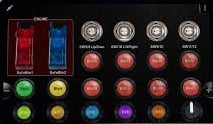
PERIPHERAL CONTROL DEVICES
Peripheral Devices are hardware additions that attach to a computer.
These include keyboards, mice, pens, switch panels, display devices.
And are usually attached via a USB port.

Peripheral Devices are hardware additions that attach to a computer.
These include keyboards, mice, pens, switch panels, display devices.
And are usually attached via a USB port.
Simulation games are fun and relaxing to play, and often a good tool to learn concepts and gain experience ready for doing the real thing. They can be used with just a keyboard or a games controller, but to get real immersion you need to add peripheral devices such as a steering wheel, foot pedals, gear shifters etc.
Dashboards displayed on the viewing screen in the simulation game are often very small and difficult to see, especially when viewed on a smaller size screen, so the use of additional peripheral devices to display this vital information and to replicate the functions of the controls can be a game changer..
Anyone who has ever tried to play complex video games or used simulators just using a keyboard will know, that trying to remember the dozens of complicated key combinations, and which keys do what, can make or break a good game and spoil the enjoyment when wrong keys are pressed in a hurry. So external 'Button Boxes' that have easily identified and dedicated buttons and switches, can take the playability to a whole new level.
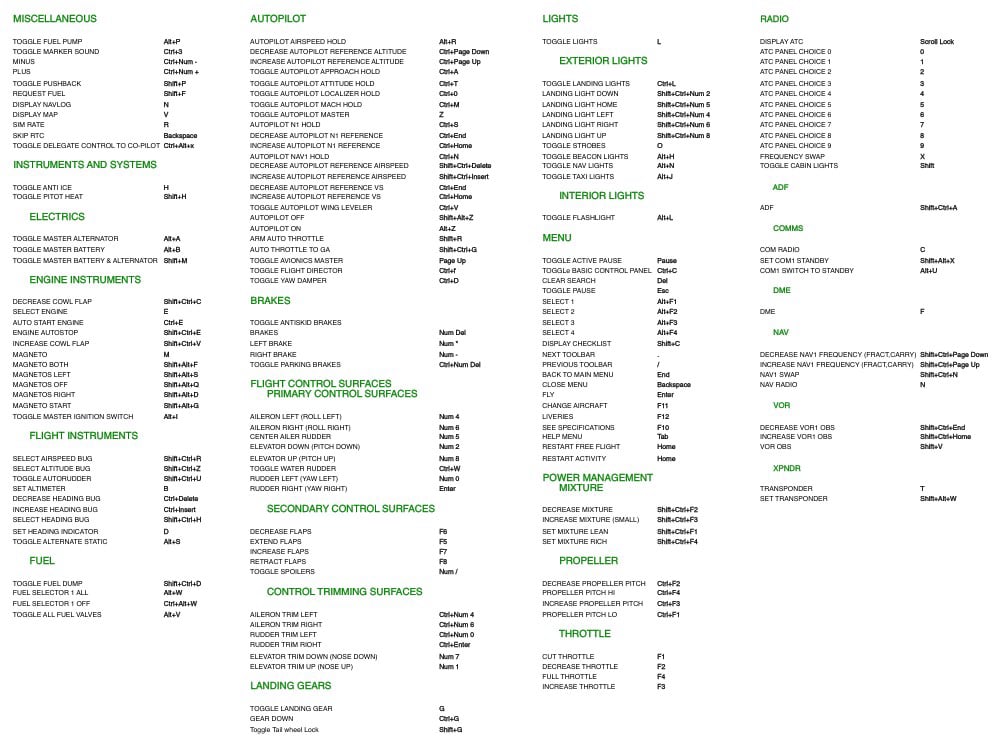
These are just some of the key combinations that are used to operate the current Flight Simulator.
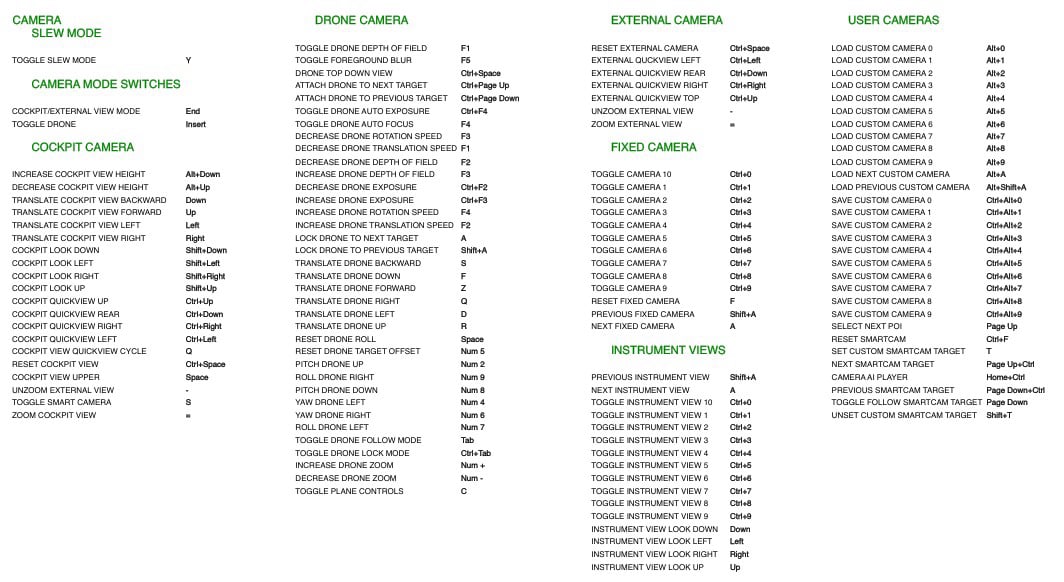
Microsoft Flight Simulator 2024 is just about to be released, and with many New options there will no doubt be many more combinations in use.
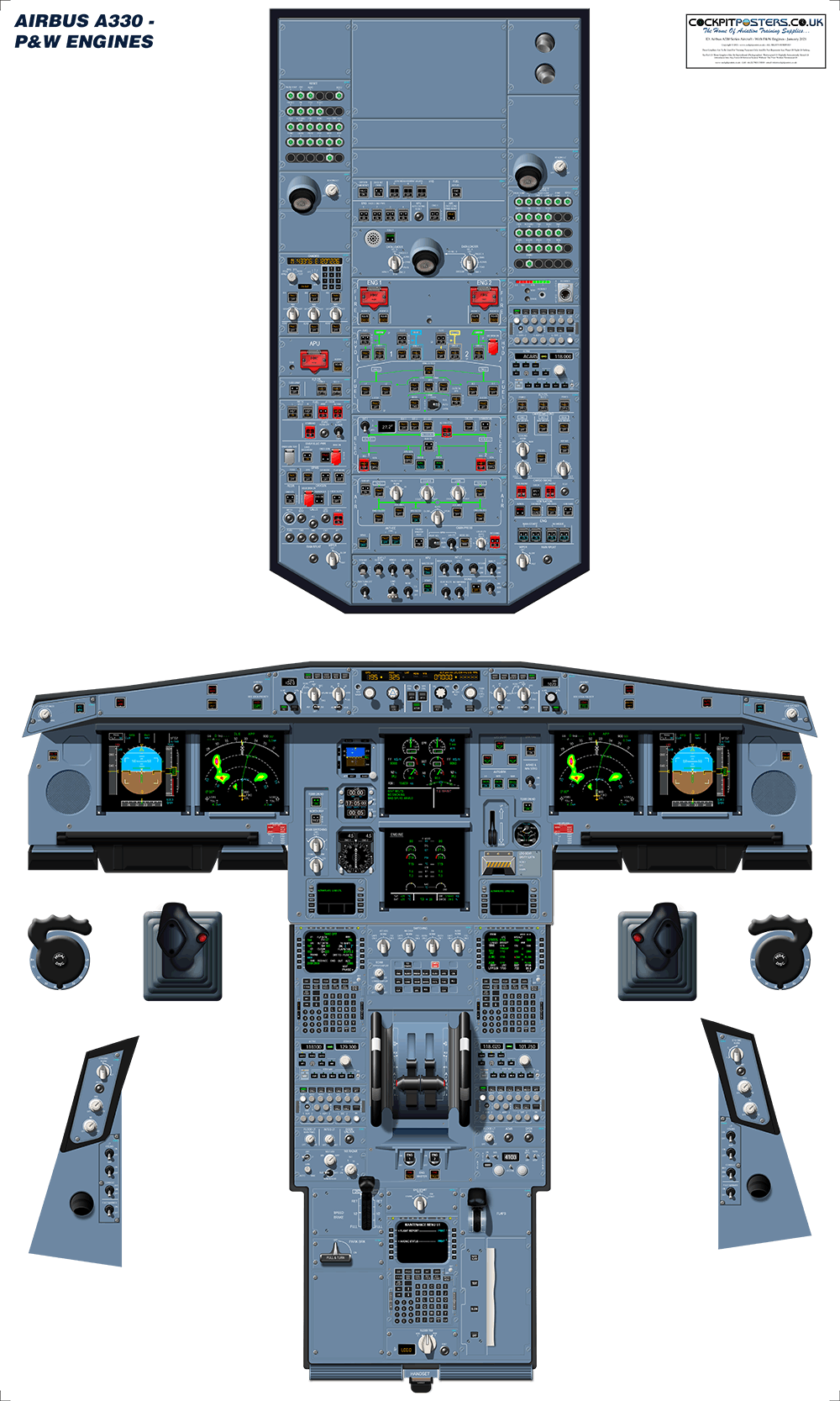
From turning on the 'Fasten Seat Belts' and 'No Smoking' lights, to operating the windshield wipers or lowering the landing gear, a Cockpit has a button, switch, knob, dial or lever to do absolutely everything!
An Airbus A330 has 490 switches and buttons. If you were to learn one of these buttons or switches every day, you would need about 18 months to memorize everything.
A Boeing 747 (Jumbo Jet) has around 10,000 switches, dials and buttons. The pilots have to use them frequently, so they're designed to be easy to reach and simple to operate.
These controls often need to be located just from memory and whilst performing other tasks such as visually flying the plane.
Clearly visible and well labelled, these switches and controls are much easier for the pilot's brain to quickly and accurately locate and operate in an emergency, or during extremely stressful periods such as taking-off or landing the aircraft,which is the busiest part of a pilots routine.
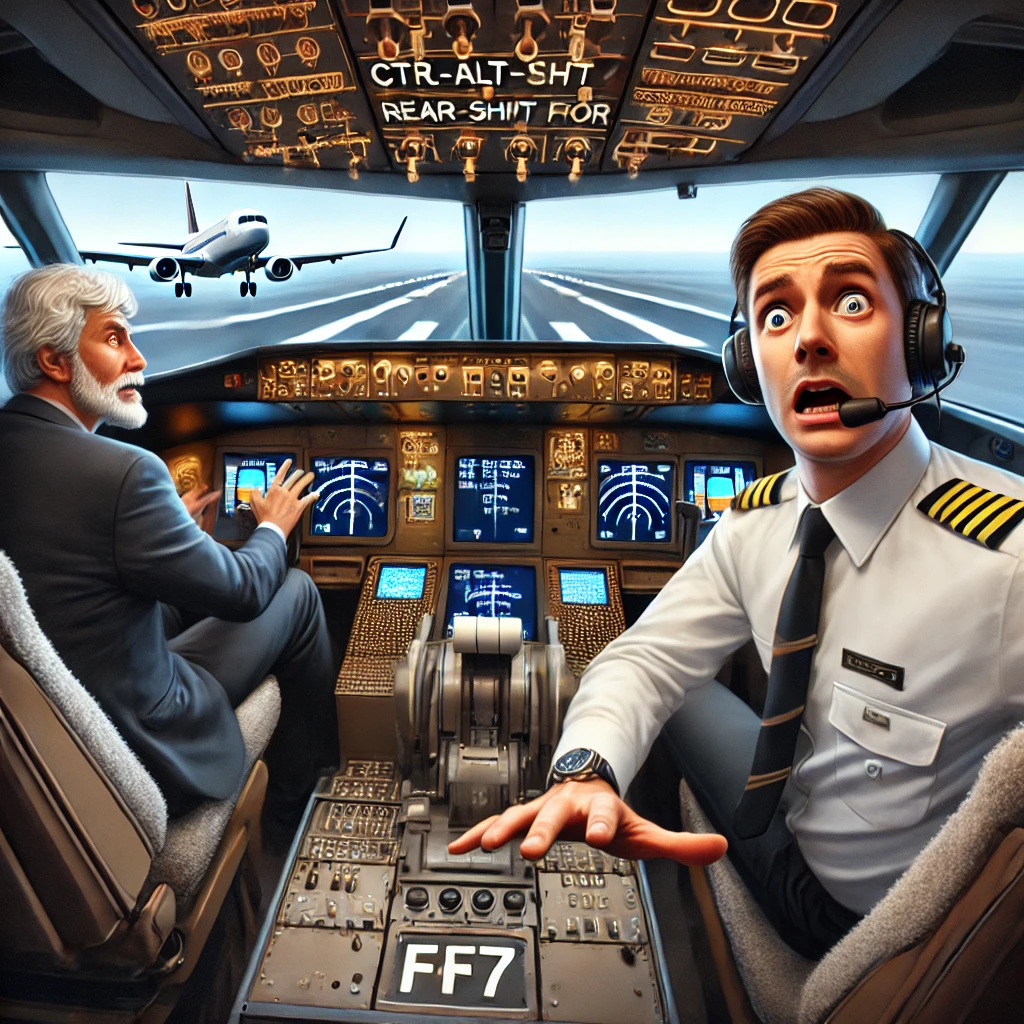
PILOT:
Ok First-Officer we are approaching the runway, please select CTRL-ALT-SHIFT-F7
F.O:
But Sir, that's to open the rear cargo door, it's not to lower the landing gear!!!
I have had several strokes, and the last one left me with occasional weakness in my left arm and hand, when this happens the accuracy of typing with this hand is reduced,
and this can make using the keyboard as a controller a bit hit and miss. It also means I cannot operate a handheld game controller as I can not grip it.
I can operate a steering wheel or yoke, a gear stick or levers, and flick switches, so to me it is important to move away from using a keyboard.
Below I will show some of these devices, and attempt to highlight both the good points and bad.
I can only recommend what I have actually tried out and used myself, and will point you towards suppliers that I have actual experience of purchasing from. Therefore there will be other alternatives!
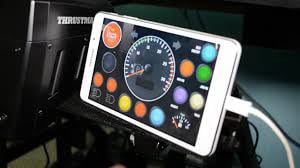
Sim-Dashboard Studio is a software program that can make use of Android tablets or Android Phones. The main program is kept on the PC, and client software in the form of an App is loaded onto the touchscreen devices you choose to use.
It can display dials such as speedometers, tachometers, fuel guages, oil pressures, and also virtual buttons you can set to operate a game or simulator functions.
Sim-Dashboard is suitable for driving simulators, flight simulators, Racing simulators, train simulators, and a wide variety of games. It can also be used to control other software such as 'OBS' providing buttons to select record, mute, broadcast, change screens etc.
Although it comes with many pre-made 'Dashboards', you can design your own layouts using the various dials and switch options. It works on a page system, so you can create more than one panel and swipe between them. So you can mix vehicle controls and streaming controls on the same device.
There is a long list of supported games and programs, and it will automatically change to the one you load up.
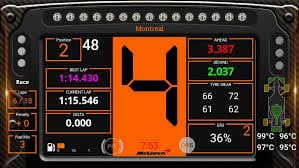
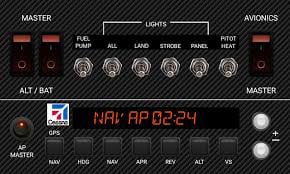
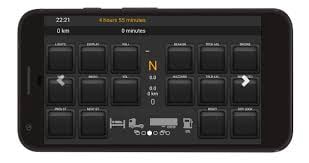
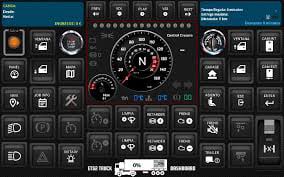
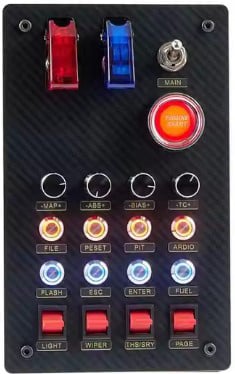
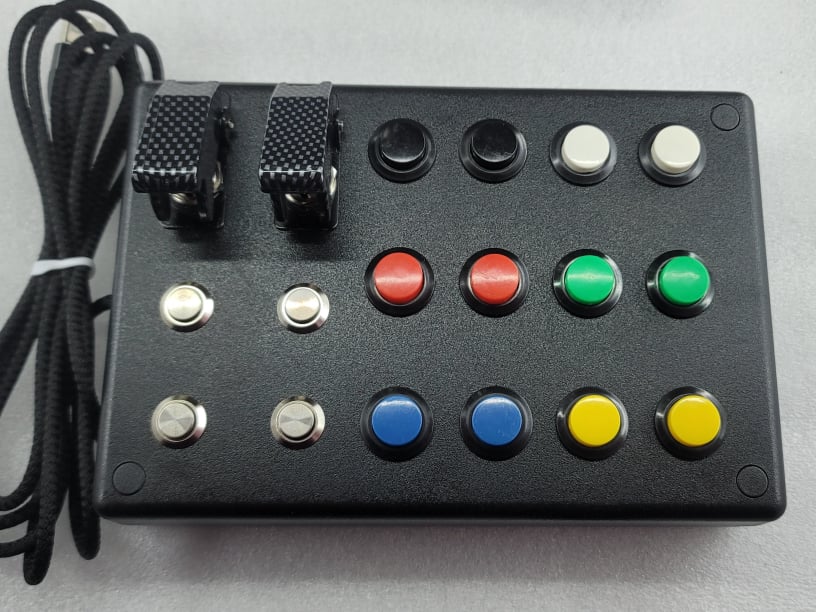
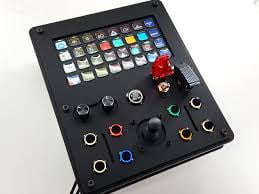
As with all pre-made accessories, they come with a price, especially those relating to Flight Simulation.
But you can make your own for a fraction of the cost.
Using a Zero-Delay USB Encoder Board, and a handful of buttons you can make a button box to suit your personal needs.
For a little more you can use an Arduino Board, then you can add dials, switches, and digital displays.
You can fit them into a ready-made project box, 3D print a box or panel, or use a perspex or plywood sheet, so you can choose to make a full dashboard or flight panel with as many controls on it as you please.
Using a USB Zero-Delay Board
USB Encoder Button Racing Panel
Using Arduino Board
Flight Sim Button Box